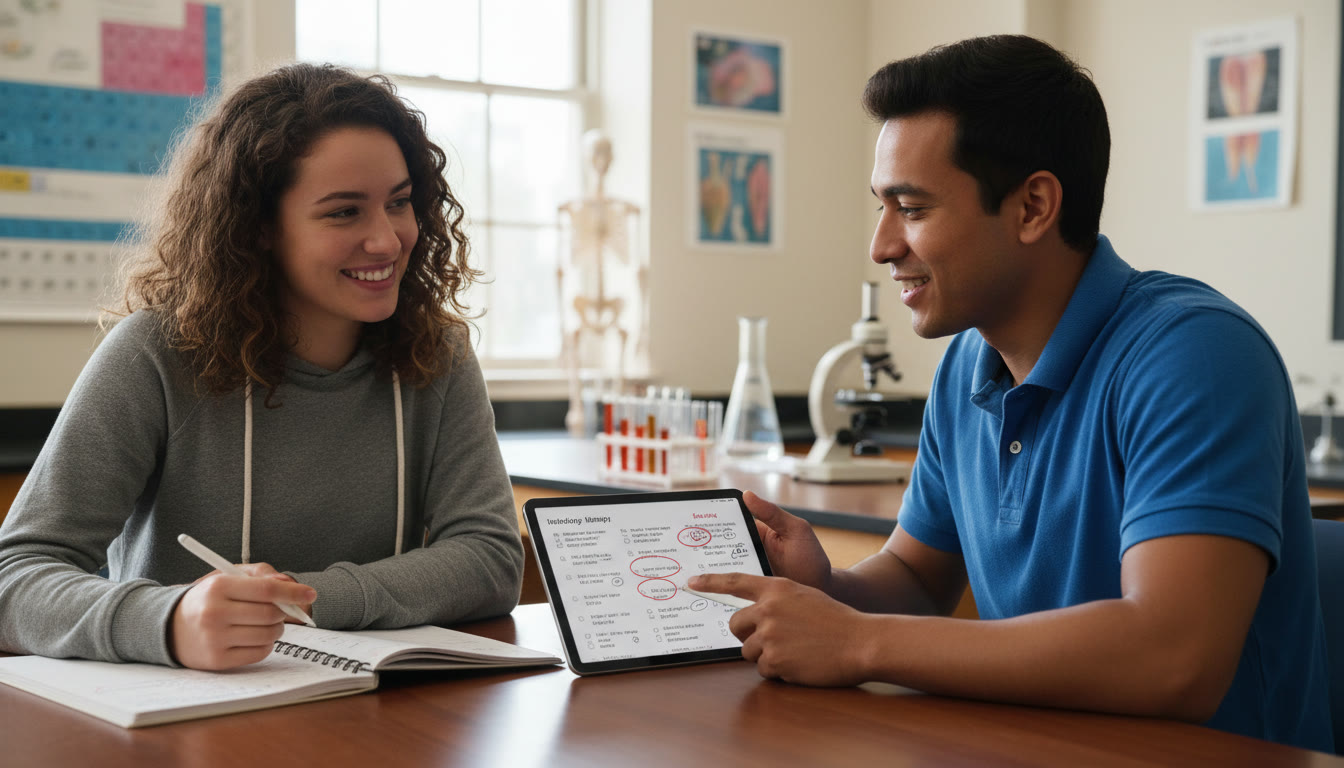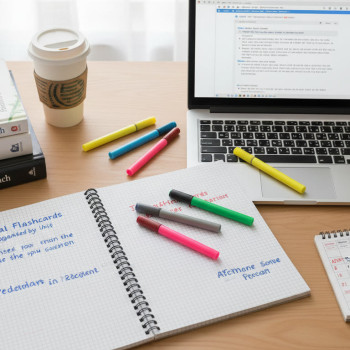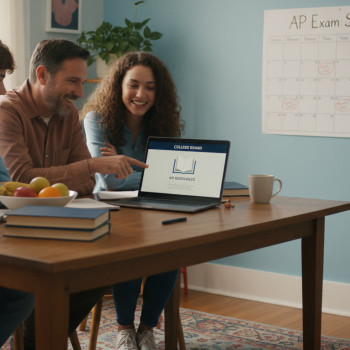Why Lab Weeks Matter: Balancing AP Labs and Board Practicals
For many high school students, the spring term means two things at once: AP exams that test conceptual understanding and board practicals (or school-level practical exams) that test hands-on skills. Both are important — AP scores can open college credit doors, and strong practical performance shows mastery and can affect internal grades. The challenge is real: how do you schedule Science Lab Weeks so that you don’t shortchange conceptual study, hands-on competence, or your own sanity?

What students and parents usually worry about
There’s a common rhythm to exam season anxiety: “If I stay late doing a lab, I’ll miss time reviewing for AP multiple choice.” Or the flip side, “If I spend all week drilling AP FRQs, will I botch the practical because I didn’t rehearse techniques enough?” These are sensible concerns. The answer isn’t to choose one and abandon the other — it’s to design lab weeks intentionally so each kind of assessment strengthens the other.
Principles for Scheduling Lab Weeks
Before you draft a schedule, anchor your plan in a few practical principles. These will keep your weeks efficient and reduce last-minute panic.
1. Prioritize complementary preparation
Hands-on skills and conceptual understanding aren’t separate silos. Use labs to reinforce concepts you’ll see on AP free-response questions (FRQs) and multiple-choice sections. When students physically measure, observe, and analyze, abstractions become memorable. Schedule labs that align with AP content windows so the practice doubles as study time.
2. Use focused repetition
One or two deliberate repetitions of a technique are far more valuable than many unfocused trials. Plan short, high-quality lab sessions that emphasize mastery of a few procedures. This helps with board practicals that often assess method and accuracy rather than novelty.
3. Block time for data interpretation
Collecting data is only half of science. Students must be fluent in processing, graphing, error analysis, and connecting results to theory — skills that frequently show up in AP FRQs. Reserve time immediately after a lab for data cleanup and short write-ups while observations are fresh.
4. Build review buffers
After a heavy lab day, schedule a lighter review day or a short active-recall session focused on AP-style questions tied to that lab. The buffer reduces burnout while cementing links between practice and exam-ready knowledge.
Sample Lab Week Plans
Below are three adaptable templates for common scenarios: (A) Schools with a full lab day, (B) Schools with limited lab access, and (C) Students juggling board practicals and independent AP prep.
Plan A — Full Lab Day (Best for schools with dedicated lab blocks)
- Monday: Pre-lab briefing (30–45 min) + set-up — highlight AP connections and safety.
- Tuesday: Lab execution — focused technique practice and data collection.
- Wednesday: Data analysis and short formal write-up in class (include an AP-style question).
- Thursday: Re-run or repeat key steps for accuracy + targeted mini-assessment (timed technique check or mini-quiz).
- Friday: Concept review and AP FRQ practice linked to the lab (45–60 min).
Plan B — Limited Lab Access (When you have only short windows)
- Day 1: Pre-lab video and checklist at home + 20–30 min in-class demo.
- Day 2: Intensive 60–90 min lab run — prioritize core measurements.
- Day 3: Post-lab data analysis at home with scaffolded worksheets; in-class 20-min discussion.
- Flexible evening: Short AP-style question bank session that ties to the experiment.
Plan C — Independent Student (Balancing board practicals and AP study)
- Morning lab block (or weekend session): Focus on technique & accuracy.
- Afternoon: Active recall session for AP content — 30–60 minutes of spaced self-testing.
- Evening: Short write-up, peer review, or teacher feedback loop; plan one 1-on-1 tutoring session during the week if needed.
Sample Two-Week Schedule: Combining Board Practicals and AP Prep
Here is a concrete two-week sample that blends hands-on practice, AP FRQ work, and rest. You can adapt timings to match block periods or shorter class times.
| Day | Morning / Lab | Afternoon / AP Focus | Evening / Reinforcement |
|---|---|---|---|
| Mon (Week 1) | Pre-lab talk + safety review | Targeted content review (30 min) | Flashcards (15 min) |
| Tue | Full lab run — collect data | AP MCQ set linked to lab (45 min) | Data cleanup and short questions |
| Wed | Technique drills | Graphing & error analysis workshop | Write one AP-style free-response |
| Thu | Practical rehearsal (timed) | Peer review of write-ups | Relaxed review + light exercise |
| Fri | Mini practical assessment | Practice FRQs with rubric self-check | Reflection & plan next week |
| Mon (Week 2) | Repeat or new related experiment | Targeted AP concept drill (45 min) | Short counseling/tutor check-in |
| Tue | Open lab for makeups | Timed AP FRQ practice | Self-assessment against rubric |
| Wed | Teacher demo of common mistakes | MCQ review & pattern spotting | Rest and light reading |
| Thu | Polish technique | Full AP section practice | Check-in with parent/mentor |
| Fri | Final practical check | Reflection and exam readiness checklist | Relaxation and sleep priority |
Techniques and Habits That Make Lab Weeks Efficient
Active observation and logging
Good lab notebooks are concise and habit-driven. Teach students to log: the exact procedure, measured values, uncertainties, immediate observations, and one short sentence linking the result to theory. This practice saves time and improves write-up quality.
Mini rubrics for every skill
Create tiny rubrics (3–5 points) for the most testable techniques: pipetting accuracy, titration endpoint detection, circuit wiring, microscopy setup, or data collection timing. When students know what is being scored, they practice with purpose.
Parallel AP practice
After each lab, spend 20–40 minutes on AP-style questions that use the same concept. For example, after a calorimetry lab, do an AP question on heat transfer and enthalpy. The connection makes concepts stick and demonstrates why the lab mattered.
How to Use Limited Time Wisely
Many students only get a handful of lab hours before practicals. Here’s how to compress maximal value into limited windows.
- Plan a micro-syllabus: list the three most important outcomes for the session (e.g., accurate titration technique, consistent data collection, and clear graphing).
- Use pre-lab materials (videos, checklists) to make lab time practice instead of instruction time.
- Rotate roles efficiently in groups so each student practices the critical skill.
- Record one short video of a correct run (phone is fine) to study technique and avoid repeating mistakes.
Student Case Studies — Realistic Examples
Below are brief, anonymized case studies showing how small changes in scheduling can lead to big gains.
Case 1: Maya — From rushed to reliable
Maya had excellent conceptual understanding but flubbed practicals because she rushed setups. Her teacher and I (as a tutor working alongside her) restructured her week: one short pre-lab checklist, a focused 60-minute lab with a single performance target, and a 30-minute data write-up the same day. She moved from inconsistent technique to consistent results, and her practical score rose markedly.
Case 2: Diego — Juggling board practical and AP review
Diego had both a board practical and AP exams in the same month. He split mornings for technique practice and used afternoons for targeted AP FRQ drills. We added a weekly 1-on-1 session to troubleshoot weaknesses — a model that ensured he didn’t lose ground on either front.
Tools and Resources to Make Lab Weeks Work
Some tools help the workflow without taking extra class time.
- Short pre-lab videos (2–7 minutes) that students watch at home.
- Checklist printouts for each lab technique.
- Shared spreadsheet templates for data entry and graphing to speed analysis.
- Timed practice stations where students rotate through roles under a visible timer.
How Tutoring Can Fit Naturally Into Lab Weeks
Targeted tutoring can be the difference between average and confident performance. One-on-one help allows personalized pacing through techniques, tailored study plans, and precise feedback on write-ups. For students aiming for both strong practicals and top AP scores, occasional expert sessions reduce wasted time and highlight areas of highest return.
For example, Sparkl’s personalized tutoring approach — 1-on-1 guidance, tailored study plans, expert tutors, and AI-driven insights — can help students integrate lab skills with AP exam strategies. A short weekly tutoring check-in can refine rubrics, correct small technique errors before they become habits, and recommend AP-style practice that directly connects to the lab. When used sparingly and strategically, tutoring accelerates improvement without creating dependency.

Common Pitfalls and How to Avoid Them
- Over-scheduling: Jamming too many topics into a week reduces depth. Prioritize depth over breadth.
- Disconnect between lab and exam prep: Always close the loop between hands-on work and AP-style questions.
- Neglecting rest: Fatigue undermines both technique and recall. Protect sleep, especially before big practicals and AP exams.
- Ignoring rubrics: Without objective criteria, students can’t self-correct effectively. Make rubrics visible and simple.
Checklist: Ready for a Lab Week
Print or screenshot this checklist and keep it in your planner. It’s a quick readiness assessment for any lab week.
- Pre-lab video or checklist completed?
- Clear performance targets for each lab session?
- Post-lab data analysis slot scheduled within 24 hours?
- At least one AP-style question reserved to link experiments to exam concepts?
- Planned tutor check-in or teacher feedback session (if needed)?
- Recovery time and sleep protected after intense days?
Measuring Progress: Small Metrics That Matter
Big improvements come from tracking small, actionable metrics week to week. Here are a few to measure:
- Technique Accuracy Rate — percent of trials meeting expected precision (e.g., target mass within tolerance).
- Analysis Completion Time — how long from data collection to a finished, correct graph and short interpretation.
- AP Question Score — performance on an AP-style question tied to the lab, tracked weekly.
- Rubric Consistency — teacher or tutor feedback showing reduction in recurring errors.
Final Thoughts: Schedule Intentionally, Practice Purposefully
Lab weeks shouldn’t be frantic marathons or a painful juggling act. With intentional scheduling — short pre-lab preparation, focused lab time, immediate data interpretation, and AP-style practice that closes the loop — you can make every lab double as both skill-building and exam prep. Use rubrics, small metrics, and periodic expert feedback to accelerate gains. And if your schedule is tight, a few strategic 1-on-1 sessions (such as Sparkl’s personalized tutoring) can dramatically reduce trial-and-error and keep you moving in the right direction.
Remember: quality of practice beats quantity. A confident, calm student who understands why a lab matters will outperform a hurried student who simply tries to check boxes. Plan your lab weeks with purpose, keep your goals clear, and let each experiment become another step toward both classroom mastery and AP exam success.
Quick Action Plan (Start This Week)
- Pick one upcoming lab. Create a one-page pre-lab checklist and a three-point rubric.
- Schedule a 20–30 minute session the same day for data cleanup and one AP-style question.
- If possible, arrange one short tutor check-in to refine technique or review the AP connection.
Good luck — you’ve got this. Thoughtful practice, small wins, and smart scheduling will make your lab weeks work for you, not against you. When in doubt, simplify: fewer objectives, clearer feedback, and consistent review beats chaotic cramming every time.




















No Comments
Leave a comment Cancel